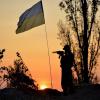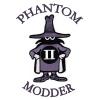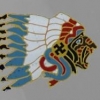Leaderboard
Popular Content
Showing most liked content on 11/06/2022 in Posts
-
13 pointsT-54 T-55 model 1971 and some crappy improvements from the dunes. T-62 T-62 model 1972 of course, regarding all differences between models, I picked the most visible differences to be featured in certain models...
-
7 pointsMitsubishi Ki-204 'Kōsoku Jōshō' (Fast Ascent) - Imperial Japanese Army Air Force, 1946 Facing similar air defence problems as Germany, Japan considered that only radical solutions could give them any hope of intercepting the B-29 Superfortress bombers that were beginning to roam far and wide over the Japanese mainland during the summer of 1944. Japan had already sent military attachés to Germany to evaluate the Me-163 rocket-powered interceptor at the Bad Zwischenahn airfield of Erprobungskommando 16 and they had also visited the Bachem-Werke GmbH to evaluate the Ba-239 project (also rocket-powered) still on the drawing board but of equal interest to the Japanese who liked the fact that it was designed to be built by unskilled labor with inexpensive materials. At considerable expense, Japan negotiated the rights to licence-produce both the Me-163 and Ba-239 aircraft and their Walter HWK 509A rocket engine and in August 1944 Japan's new Prime Minister, Kuniaki Koiso, entrusted this work to the Mitsubishi Aircraft Company. Whilst the Me-163 would be produced for the IJN and the IJAAF, Kuniaki Koiso insisted that the Ba-239 would only be produced for the IJAAF under the designation of Ki-204. With the design already completed by Bachem and requiring very little modification to accept Japanese equipment the Ki-204 progressed quickly and essentially mirrored the German Ba-239 programme by using towed unmanned glider flights before moving on to manned glider flights and then successful unmanned vertical take-offs from the experimental launch tower at Mitsubishi's Nagoya factory. However, using lessons learned from the unfortunate death of the Bachem test pilot Lothar Sieber during the unsuccessful first vertical take-off flight of the Ba-239 in March 1945 the first vertical take-off flight of the Ki-204 prototype was successful but was cut short when the main rocket engine cut out caused by a fuel pump failure in the T-Stoff (oxidiser) fuel line. With similar problems affecting the Ki-200 (Me-163) programme, Mitsubishi engineers worked flat-out to resolve the issue eventually traced to heat expansion in the pump and fuel line requiring increased localised insulation to combat the rapid heat build up when both fuels reacted during combustion. Whilst the Ki-200 was considered the more important programme the Ki-204 'Kōsoku Jōshō' (Fast Ascent) continued to make progress during the remainder of 1945 and launch sites for the Ki-204 began to spring up across several Japanese cities during late 1945 and early 1946 under the ambitious 'Operation Dagger' which called for the 10 largest Japanese cities to be ringed with a circle of eight Ki-204 launch sites with each site having three individual launch pads and towers arranged at the corners of an equilateral triangle. Operation Dagger also called for the eventful recruitment and training of 240 volunteer pilots per week with no restrictions on age or gender although a lower age limit of 17 years was later stipulated. Training for the Ki-204 was to be a simple affair with some basic familiarisation of the Ki-204's controls, studying the standard intercept profile which included a single attack with the nose-mounted rockets followed by a glide back down to an altitude of about 3,000m before the pilot left the aircraft to descend by parachute. Ki-204's began to be delivered to the Osaka Defense Circle in May 1946 with the first operational launch of a Ki-204 taking place on June 2nd, 1946 when two aircraft were launched without success against B-29's. On June 5th the Nagoya Defense Circle launched three Ki-204 aircraft against a small force of B-42C Mixmaster bombers claiming one B-42C destroyed and one damaged but one Ki-204 exploded shortly after leaving it's launch pad. Both Ki-204 pilots successfully parachuted near the outskirts of Nagoya. The Ki-204 programme continued to have sporadic successes but the supply of aircraft and pilots could not keep up with the losses and the programme was essentially over at the time of the Japan Armistice of July 1946.
-
5 pointsIf ever we will have a 'Post Acolyptical Walking Dead Steam Fallout' mod for SF2 I want a squadron of this in my private army. The early 1980s recession was a severe blow to many countries. The Iranian revolution was also causing the rise in oil prices pushing the already high rates of inflation in several major countries including the Federal Republic of Germany. German government sought help in other European countries, the United States without success. Unexpectedly in 1984, Helmut K. signed an agreement with the German Democratic Republic that guaranteed safety for the West German economy and led to an agreement on the conditions for German unification in 1985. After reunification, many western assets strengthened the NVA arsenal.
-
4 points
-
4 points
-
4 points
-
4 points1 JDAM oughta do the trick......... Say Goodnight, Gracie...........
-
3 points
-
3 points
-
2 points
-
2 points
-
1 point
-
1 point
-
1 pointin 3d max check, KeyFIlters should be 'on' scale ...or all to make sure. Do not scale mesh. You should open mesh on vertex select all vertex - start animation Key set to (1) - move to key (10) - scale (and move) vertexes to required (100%) size hit set key on 10. close mesh. Should work. Also, the mesh should be ready. Do not attempt to edit polys, vertexes, or anything after the animation is set - otherwise, the animation will be lost. Even simply going to UVmaping menu after animation will reset and screw the animation. You can only edit via modifiers - edit poly/mesh. Do not mind lod viewer - in many cases, it will not show animation properly. You have to test animation in-game.
-
1 point
-
1 pointRAF Typhoon with Storm Shadow cruise missiles Storm Shadow is an Anglo-French low-observable, long-range, air-launched cruise missile developed since 1994 by Matra and British Aerospace, and now manufactured by MBDA. Storm Shadow is the weapon's British appellation. In French service, it is called SCALP-EG.
-
1 point
-
1 pointDear Friends, Today we'll tell you about the development progress on two other Collector Planes. The first one of them is the C-47A Skytrain. C-47A was a military modification of the civil passenger aircraft DC-3 that had the reinforced floor and large door on the left side for cargo and different radio equipment. The cargo/passenger cabin windows had gun ports for small arms firing. The Skytrain name was used in the US, British called it Dakota, while in USSR it was known as Douglas. Li-2 planes (a licensed modification of DC-3 with Soviet ASh-62 engines, Soviet cockpit instruments and armament) were also called 'Douglas'. The DC-3/C-47 family was the most popular transport aircraft of the war. The model we have in the sim can accommodate a general cargo, air-droppable cargo containers in the cabin, the same containers attached under the fuselage and paratroopers. Having the takeoff weight of up to 14 tons, the aircraft could carry up to 2,5 tons of cargo (more than 3 tons if overweight). The main disadvantage was its low speed, which adversely affected its usage in airborne operations. However, it was very easy to pilot and had good performance characteristics, which made it a real workhorse of the war. The long-awaited feature - make it player controllable - should be ready soon. Our engineers and artists from Yugra-Media are working to make it available to you as soon as possible. The second plane we'd like to tell you about today is the late WWI fighter with rotative engine, the epitome of the British aircraft design school - Sopwith Snipe single seater. This aircraft is being developed from scratch since we did not make it for Rise of Flight previously. This very maneuverable, fast enough aircraft that was armed with two synchronized Vickers machine guns could confront the best German aircraft of that time. The new 9-cylinder 230 HP rotative engine Bentley BR2 had 100 HP more than the Clerget 9B engine installed on the very successful Sopwith Camel - a huge increase. The upper wing was shifted lower to give the pilot a better view forward and up. The work on the 3D model of this bird by Yugra-media artists is nearly finished and the work of our engineers is underway - we hope to release it for customers this year, which means really soon in fact. Speaking of WWI we should mention that the Flying Circus Vol.II map had good progress. We should be able to start the beta-testing of this Spring 1918 map in the near future and it will be released soon after that. In Early Access the players will be able to use the new map in QMB and create single and multiplayer missions. After that we'll have to complete the work on the Flying Circus Career mode and update the map according to the customer feedback. We count on Yugra-media designers to use the new approaches that were adopted by our map designers during the work on the Normandy map to achieve the next level of the visual quality and fidelity compared to the old Rise of Flight map. And last but not the least - according to the player feedback we have revised the WWI airplanes damage from rifle caliber ammo - the evolution and the improvement of all the parts of IL-2 continues.
-
1 point
-
1 pointContinuing with the trend imposed by Coupi , here I am recycling working on a UKR SU-27UB, it is what there is for now, of course if someone also works on a new double seat 3d model , it does not bother me at all to discard this mod
-
1 point
-
1 point
-
1 point
Important Information
By using this site, you agree to our Terms of Use, Privacy Policy, and We have placed cookies on your device to help make this website better. You can adjust your cookie settings, otherwise we'll assume you're okay to continue..















.thumb.jpeg.f2256fa6bab2d571a8a78b3ed2a0ac0a.jpeg)






